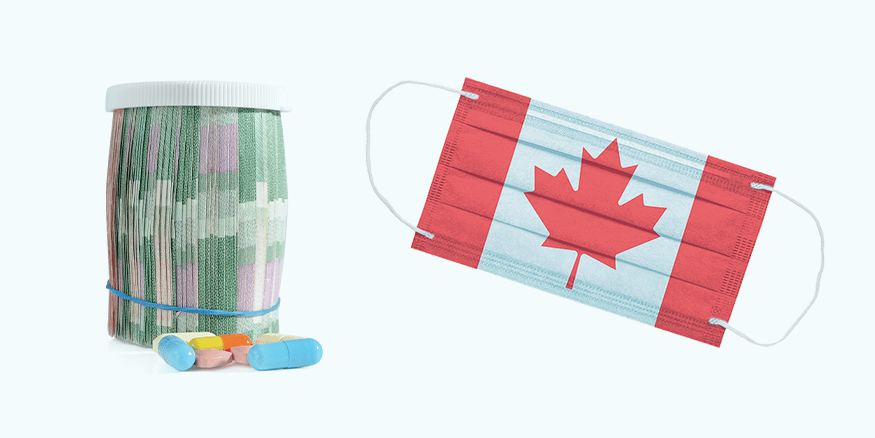
Paying for Healthcare in Canada
Canada’s healthcare system is popularly known as ‘free’ among global audiences. It is universal coverage for medically necessary healthcare services provided on the basis of need, rather than the ability to pay. However, we have a myriad of systems and they aren’t truly free. To capture a high-level picture of the cost of healthcare in Canada, we look at the price of public healthcare insurance and examine how long Canadians wait to receive necessary care.
Public Healthcare
Canada is an anomaly among other countries with a universal healthcare system because ours does not include coverage for prescription drugs unless you are in the hospital. We also have a dual coverage system. Canadians can receive coverage for healthcare services, products, and prescription drugs from both public (government) and private insurance. A small percentage of Canadians have only public healthcare insurance.
For those who have a combination of government and private coverage, there may still be remaining out-of-pocket expenses depending on insurance limits and other costs, such as premiums and deductibles. Public programs in Canada pay for only 42% of total prescription drug expenditures, private insurance plans (usually these are a combination of employer and employee premiums) pay for 35%, and patients pay a whopping 23% out-of-pocket.1
The federal government funds the bulk of our healthcare systems through transfer payments to the provinces and territories (P & T) from tax contributions made by Canadians, including taxes on income, property, profit, sales, and more. However, the funds go into general revenue for the P & T, rather than to healthcare exclusively.2
Thus, it’s hard to track how much of your tax dollars go into healthcare. Researchers sought to answer this by calculating the amount households, including individuals, contribute to the country’s total healthcare spending (these do not include dependents and children since they are not taxpayers). According to the Canadian Institute of Health Information, governments directed approximately $172B of Canadian tax dollars toward public healthcare costs in 2019.
Researchers divided Canadian families into ten income groups. Families with the lowest average yearly total incomes of $14,168 will pay an average of $471 for public health insurance in 2020. Families with an average income of $65,522 will pay $6,627. The top-earning Canadian families, on the other hand, with an average income of $281,988 will contribute $39,731.
This methodology assumes that that the amount of tax going toward healthcare insurance is equal to tax revenues spent on healthcare by the government, which researchers estimated to be 28.8% for 2020/21.
Wait Times
In 2019, the national wait time average for treatment after a specialist appointment was 10.8 weeks, which is a slight improvement of 0.2 weeks shorter than in 2018. However, the average wait time for receiving medically necessary surgeries and procedures after a referral from a general practitioner was 21 weeks, an increase of two weeks compared to 2018.3
Quebec has the shortest wait times for specialists, with an average of seven weeks, while Prince Edward Island (PEI) suffers from the longest, at about 29 weeks. Ontario has the shortest wait time from consultation with a specialist to receiving treatment, at eight weeks, while PEI has the longest wait time of 20.5 weeks. 80-93% of Ontarians needing surgery in the digestive system and thoracic surgery for gastroesophageal reflux disease received timely care by performance benchmarks.4
Access to diagnostic testing also has its barriers, which is crucial for people with digestive diseases and disorders. Individuals waited around 4.8 weeks for a computed tomography scan, 9.3 weeks for a magnetic resonance imaging scan, and 3.4 weeks for an ultrasound.
Governments across Canada have prioritized healthcare services to combat COVID-19, postponing elective surgeries in the early months of the pandemic, leading to backlogs of more than 100,000 by May 2020.5 It is too early to determine the consequences these delays will have on our healthcare systems.

